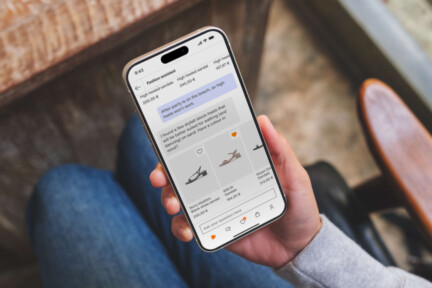How many purchases have you made this year using your phone? Even if you're not attached to your smartphone all the time, you likely find it more natural to reach for it than to open a laptop when shopping. This trend is reflected in statistics: the share of mobile e-commerce sales in the overall e-commerce market is steadily increasing each year. Between 2021 and 2022 alone, the time consumers worldwide spent in e-commerce apps grew by 12%.
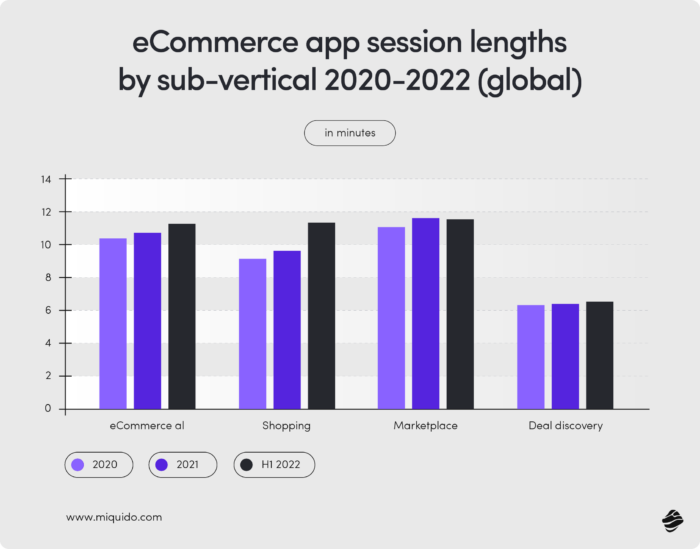
Emarketer’s June 2023 forecast predicts that in 2024, US mobile phone users will, on average, spend 3 hours and 15 minutes (3:15) per day on their devices. Such increase in mobile usage is happening globally, with mobile devices dominating internet traffic.
This rising trend presents a significant profit opportunity. Expanding sales is the principal benefit of mobile commerce, but the right solution will also score you an image goal. If you want to implement innovative eCommerce app features and improve mobile users’ experience, search no further.
Unlock the full spectrum of mobile commerce benefits for your company with our insights, creating sites and cross-platform apps that covert. Let’s dive in!
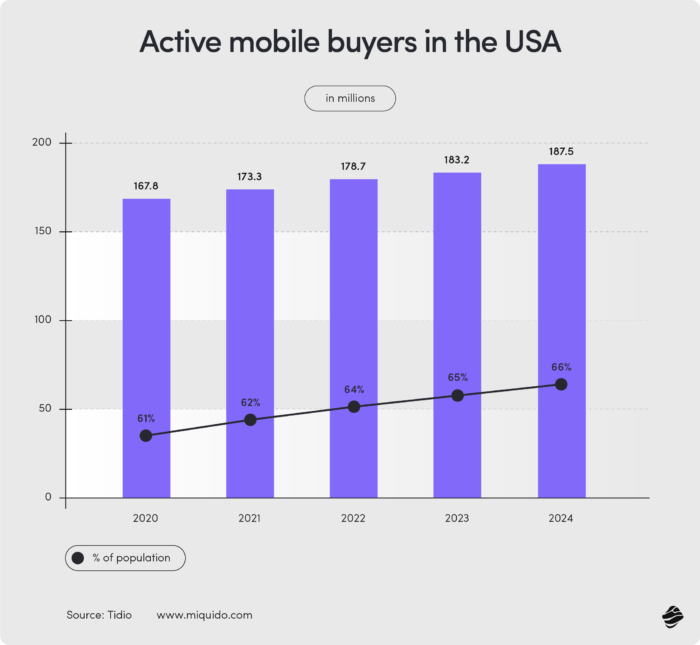
What is mCommerce and How is it Evolving?
Mobile commerce, often abbreviated as mCommerce, is a segment of eCommerce that relies on mobile transactions, primarily through smartphones. While the most common form of mCommerce involves purchasing goods via an online store, the concept covers a broader range of online activities conducted on mobile platforms.
Mobile apps for services, marketplaces, in-app purchases for virtual currencies and additional features, and mobile ticketing—all these activities fall under the "umbrella" of mCommerce. Although the pandemic boosted its growth, the mobile niche has been steadily expanding over the last decade.
Most eCommerce giants launched their mobile apps in the late 2000s (Amazon - 2008, eBay - 2008, Etsy - 2011, Zalando - 2012), but the significant surge in mobile device usage happened in the 2010s. It was then that mobile apps began to diverge significantly from their web counterparts. Increasing emphasis was placed on UX and interface design that truly met the needs of mobile users, thereby increasing conversion chances.
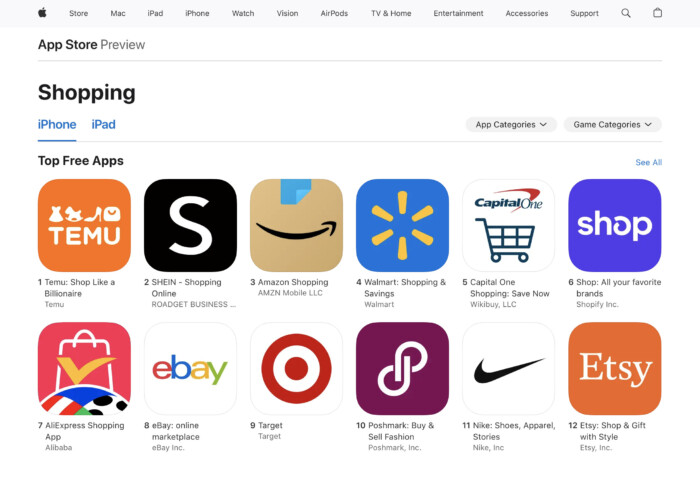
What is mobile commerce today? Without a doubt, it holds completely different meaning than it did a decade ago. What has changed, and why can advanced mCommerce solutions provide you with a competitive edge?
Why Investing in mCommerce Makes Your Business Future-Proof?
This article offers specific strategies to help you capitalize on the potential of mCommerce. Before diving into these strategies, it's crucial to understand why developing mobile sales and implementing strategies aimed at improving mobile UX is so important.
Demographics are Changing
Gen Z is gaining importance as a main buying force, and Gen Alpha is growing up. These generations don't remember a world without the internet, and more importantly, they grew up with smartphones in their hands.
Even though opposing trends (such as "dumb phones") occasionally emerge, smartphones are now an inherent element of our lives and shopping habits. Even if they evolve into something else, consumer demands for mobile shopping will only grow.
Smartphones Increase Purchase Chances
Mobile shopping increases conversion chances because users can complete purchases immediately. Many things can happen from the moment they see their dream shoes.
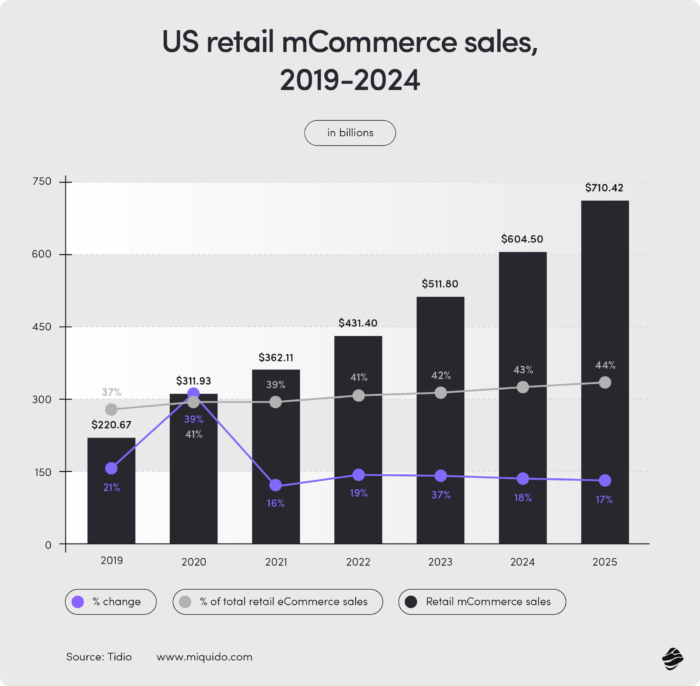
With well-crafted m Commerce tools, you can strike while the iron is hot and guide the customer to purchase through an intuitive shopping path, personalized experience, accurate recommendations, and AI assistance.
Expanding Accessibility Through Mobile Apps
In many countries in Asia, Africa, and Latin America (India, Nigeria, Brazil, the Philippines, etc.), mobile phones are the primary means of internet access. Reasons vary from affordability to the limited availability of fixed-line infrastructure.
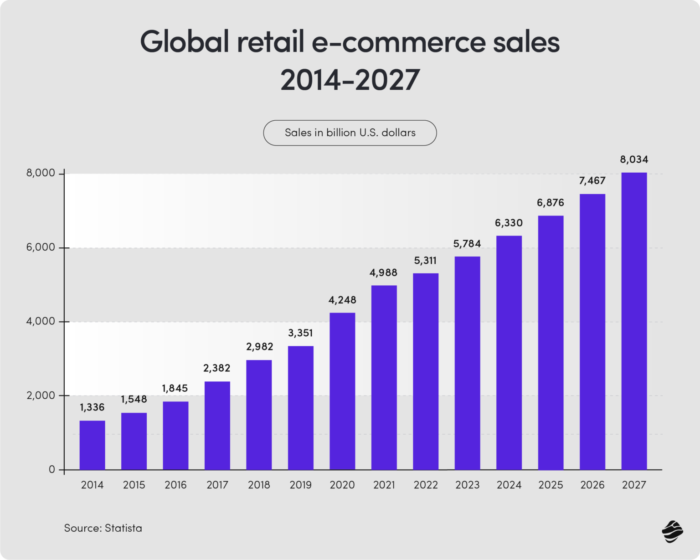
Nevertheless, if you want to remain accessible to customers and scale globally, investing in mobile development is a must.
Mobile Commerce vs eCommerce - How Do Mobile Users Buy?
To fully embrace the benefits of mobile commerce, it's crucial to understand that shopping on smartphones is very different from using a desktop. By working with expert mobile app development services provider, you can create shopping experiences that perfectly fit your customers' needs.
Short Shopping Path
From a mobile user's perspective, minimizing shopping steps is crucial. A smartphone is their small command center—it keeps them connected, navigates, entertains, and more.
Often, purchases are made between the commute to work and buying a takeaway coffee or while waiting for the metro. If the shopping path is too long, they may abandon the cart. The takeaway is clear: keep the process to a few steps, and you will strike a purchase!
To further streamline the shopping experience, integrating mobile payments such as Apple Pay and Google Pay is essential. These options allow users to complete transactions swiftly, without the hassle of entering payment details repeatedly, ensuring a seamless and efficient checkout process.
Quick Checkout
Navigating tabs and copying information isn't convenient on a mobile interface. Therefore, more mCommerce vendors are implementing mobile wallets and one-click checkout. In this case, the app collects necessary payment information, reducing friction in the checkout process.
Optimized Interface
It might seem obvious, but it’s worth emphasizing: an interface designed specifically for mobile users is a must! High churn rates in mobile applications often result from neglecting this aspect. Your app or the mobile version of your site should be optimized for touch navigation, with larger buttons and simplified interfaces. Say goodbye to desktop UI!
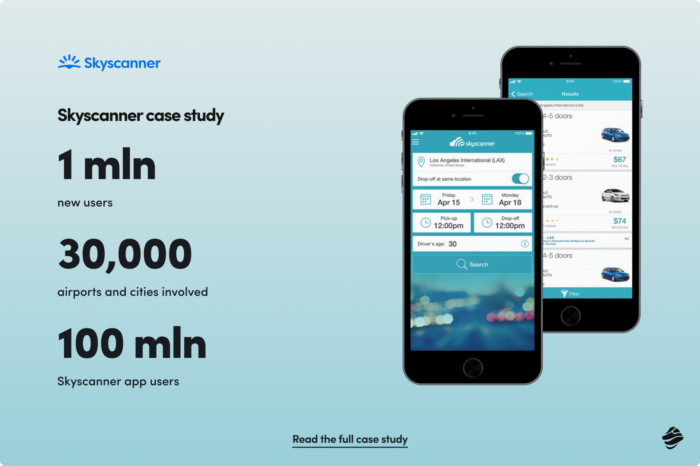
Don't let users struggle to open the menu or finalize a purchase just because they're using touch. Consider that more and more mobile users utilize voice search—optimize your content and site structure accordingly. Or, alternatively, provide them with a GenAI virtual assistant that facilitates conversational voice searches. And, last but not least—make it fun! Dynamic interfaces with basic animations and micro-effects can literally push the client towards the purchase, providing you with more benefits of mobile commerce.
How to Sell with mCommerce?
Personalization
As mentioned, mobile users often shop on the go. That results in much shorter sessions, potentially affecting conversion chances. Advanced personalization is a great way to capture your customer, and it’s much easier with an actual mCommerce app than a mobile site, especially in the post-cookies era.
You can use geolocation data, information provided by users during the onboarding process, or their online shopping patterns to personalize their feed, recommendations, push notifications, and loyalty programs.
Think about going a step further and enabling users to personalize their interface—its elements, layout, colors, and recommendation preferences—so they feel it’s “their” app and opening it becomes part of their routine.
Social Commerce
Social media plays a crucial role in today’s eCommerce, both in terms of direct sales and branding efforts. You can reinforce the relationship of customers with your brand by sharing the engagement you already have. Take clothing brands—most industry leaders embed user-generated content on their sites or in their apps.
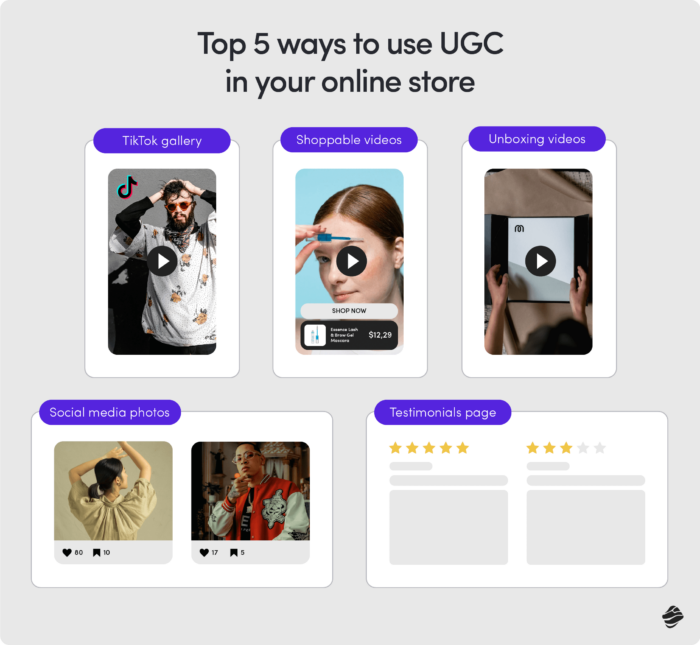
Reviews, photos, and videos of particular products shared on social media show your customers that your product is real and usable. Plus, it provides them with an additional perspective beyond clean studio photos and videos, contributing to sales.
Consider the transaction itself, too. In mobile shopping, where purchase intent often results from scrolling, it’s crucial to enable direct purchases from social media platforms. Implementing such integrations and combining them with one-click checkout could lead to a sales spike!
Location-Based Services
Mobile devices enable you to navigate your geolocation strategy more dynamically. Many potential customers leave their laptops at home when going on vacation or a short trip.
With geolocation, you can seize this shopping opportunity and provide personalized offers and recommendations based on their current location. The dynamic location-based interface with push recommendations can be a great impulse for your app users to get in the mood for shopping.
Key mCommerce Trends in 2024
With a generative AI revolution unfolding before our eyes and several other innovations brewing, both eCommerce and mCommerce will radically transform in the coming years. What should you expect?
Multimodal GenAI Chatbots
In less than two years since ChatGPT's debut, generative AI has significantly evolved and quickly became a vital element of both personal and business life. Today, we’re at an interesting point where GenAI chatbots are becoming multimodal and interacting with users more naturally. Building and polishing intelligent systems on their basis will likely be the focal point of AI in ecommerce in the following years.
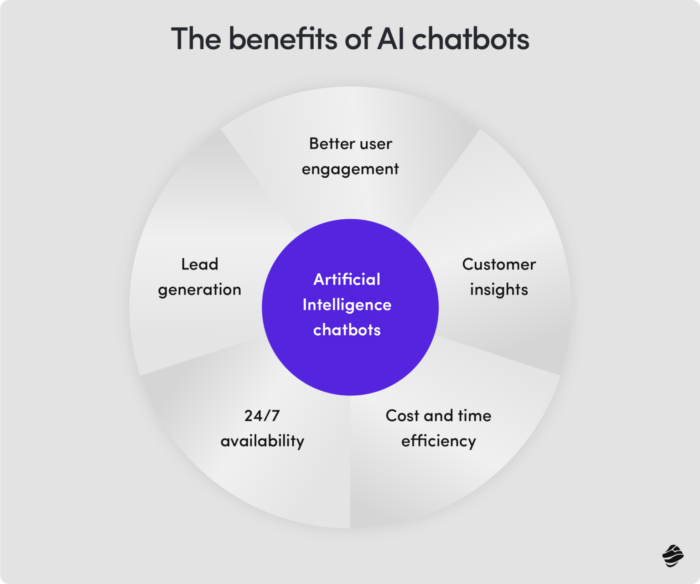
Their integration will be a key enhancement to the mobile user experience in the coming years, as they can drastically shorten the shopping path and help find specific products. They also reduce the decision-making process for users. Based on simple prompts and data on shopping behaviors, they provide specific solutions, saving users time on research, setting filters, and other time-consuming activities.
H&M, Zalando, and Expedia have already embraced the potential of GenAI chatbots and unlocked the full range of mobile commerce benefits. With our AI Kickstarter, you can too—it’s easier than ever!
Augmented Reality Shopping Experience
Augmented reality (AR) may not be progressing as quickly as imagined, but it has immense possibilities in mCommerce. The IKEA Place app, an AR-enabled app for furniture shopping, is a great example. By pointing your smartphone or tablet at your living room, you can see a realistic 3D model of a sofa superimposed into your space. You can rotate, resize, and move the virtual sofa to see how it fits with your existing decor.
This immersive experience helps visualize the product in your home and aids in making a more informed buying decision without visiting a physical store, enhancing customer satisfaction and reducing the likelihood of returns.
ASOS also includes AR in their mobile app. With the “Match With Style” feature, users can find identical or similar products available in the store by taking or uploading a photo. The app's software then analyzes the image to find exact matches for the clothing items shown. By enhancing the traditional search function that provides suggestions as users type, ASOS paves the way towards higher purchase rates.
If you want to follow their example and access more benefits of mobile commerce with AR, let's talk!
Beyond-Shopping Experience
Building additional features around the product and providing users with added value can yield significant benefits. It gives them an extra reason to use your app, increasing shopping opportunities and strengthening your relationship with users. How can this look in practice?
Nike just does it, making their mobile app a comprehensive platform for fitness enthusiasts. Motivational stories, training tips, tracking features, and fashion advice elevate their shopping experience.
We’ve applied a similar approach in one of our mCommerce projects—a mobile app for HerbalifeGO. Besides ordering Herbalife products, users can create and manage meal plans based on the purchased foods and their established objectives. The app allows them to easily track their progress while providing them with meal ideas involving Herbalife’s products.
Reach for Mobile Commerce Benefits with our checklist
- Go Mobile-Friendly: Make sure your site and app are touch-friendly with larger buttons and simple interfaces.
- Simplify the Shopping Journey: Cut down the steps in the shopping process to just a few clicks (Add to Cart -> Checkout -> Payment).
- Get Personal: Use geolocation data, onboarding info, and shopping habits to personalize feeds, recommendations, push notifications, and loyalty programs.
- Let Users Customize: Give users the power to personalize their app interface, from layout and colors to recommendation preferences.
- Optimize for Voice Search: Tweak your content and site structure to make it voice search-friendly for those who prefer talking over typing.
- Integrate with Social Media: Enable direct purchases from social platforms and showcase user-generated content like reviews, photos, and videos.
- Team Up with Influencers: Partner with influencers to create genuine content that drives engagement and sales.
- Go Augmented Reality: Add AR features that let users visualize products in their space, like IKEA Place’s virtual furniture.
- Innovate Search: Develop intuitive features to help users find products by uploading or taking photos.
- Deploy AI Chatbots: Integrate AI-powered chatbots to assist with product searches, provide recommendations, and streamline the shopping process.
- Embrace Conversational Commerce: Enable voice searches and AI-driven interactions to make shopping more intuitive.
- Track and Learn: Use analytics to monitor user interactions and identify areas for improvement.
- A/B Test Everything: Regularly test different elements of your mobile commerce strategy to find what works best.
- Localize Your Content: Adapt your mobile content and offers to fit the cultural and linguistic preferences of different regions.
- Build a Community: Create features around your product that add value beyond shopping, like Nike’s motivational stories, training tips, and tracking features.
- Keep Users Engaged: Introduce features that encourage regular app use, such as fitness tracking or meal planning tools.
Develop your mCommerce solution with us
As an Ecommerce software development company with strong background in mCommerce development services, we can bring your vision to life, taking all the listed good practices into account. Our frameworks are designed to make such implementations cheaper and more effective, allowing you to access all the benefits of mobile commerce. Let’s talk!







![[header] 29 top ecommerce app features you need to know](https://www.miquido.com/wp-content/uploads/2024/02/header-29-top-ecommerce-app-features-you-need-to-know-432x288.jpg)

